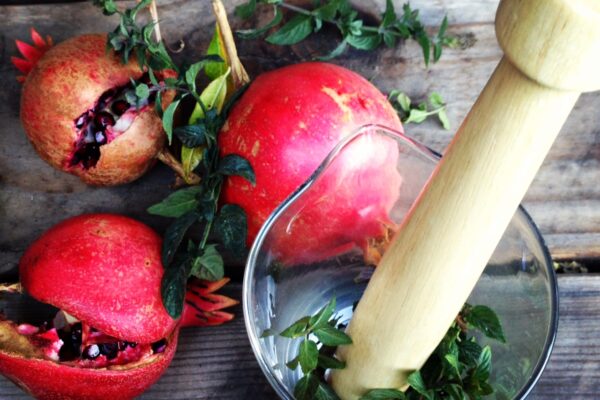Play
Tea and Cocktail Class
During this Saturday’s DIG IT class, we’ll be talking about tea and cocktails! Please join Star Apple Edible Gardens for a fun filled class from 1-2PM on Saturday, November, 1st. Here’s a sneak peak of some of the things we’ll be covering:
Many of the herbs that grow well in containers and raised beds can be used to make tea and cocktails. If you’ve never tried anise hyssop iced tea or a basil lemon inspired cocktail – you’re in for a real treat! Whether you steep your herbs for tea or make a simple syrup to add to cocktails, making room in your garden plot for tea and cocktail herbs is a must. Here are a few of our favorites that can be found at the Bay Meadows community garden:
Agastache. Also known as Hummingbird Mint. It should not be a surprise that a plant with mint in its common name is a great herb for making tea and cocktails! While mint is not allowed in the community garden plots due to its invasiveness, Agastache is welcome. We love Agastaches for their diversity of sizes and colors almost as much for their diverse tastes. If you ever get the opportunity to taste test your way through this genus of plants — do it — and invite us! Their edible flowers can be used as a garnish for cocktails and licorice scented leaves can be steeped for tea and used in simple syrups for cocktails. Favorite tasting varieties include ‘Licorice Candy’ and ‘Tutti Fruiti’.
Anise Hyssop. This perennial herb is one of my absolute favorites to include in edible gardens. Steep Anise Hyssop leaves for a refreshing licorice tasting tea (I love it iced on a hot day), use it’s edible flowers as a garnish in cocktails for it’s subtle licorice taste and collect its seeds to use in the kitchen! Also a favorite for attracting hummingbirds and pollinators to the garden.
Basil, ‘African Blue’ and ‘Wild Magic’. Both ‘African Blue’ and ‘Wild Magic’ basil varieties are fantastic for making simple syrups for cocktails. These highly aromatic basils are also grown for their edible flowers – so don’t forget to garish your drinks with them right before serving!
Bee Balm. Another great genus of plants in the mint family for the tea drinker. Bee Balm is traditionally used for teas (steep its minty-basil tasting leaves), but don’t overlook it’s edible flowers! If you are a traditionalist seek out ‘Lemon Bergamot’ or ‘Bergamot’ varieties.
Berggarten Sage. Also known as the ‘Tea Sage’. Steep leaves for a refreshing and healthy herbal tea. Leaves are also great fried and it’s spring blossoms make great additions to cocktails.
Borage. This annual edible flower is best known for its cucumber-like taste. Add it to any drink that this taste would compliment (Bloody Mary’s, Pimm’s Cup, etc.) and don’t stop there. The beautiful blue and white flowers are great garnishes to float in so many drinks and is a wonderful addition to prosecco or champagne.
Chamomile. The classic herbal tea ingredient. This annual edible flower can be used fresh or dried and mixed with other herbs for calming teas. Our favorite combination includes chamomile and lavender!
Lavender. Lavender flowers are a classic addition to herbal teas, potpourris and herby cocktails. Be mindful of choosing dwarf varieties when thinking of adding to your garden plot. A ‘Provence’ or ‘Grosso’ lavender will easily take over all of your garden space, so look instead for ‘Hidcote’ or ‘Munstead’.
Pineapple or Tangerine Sage. We grow Tangerine Sage – Pineapple Sage’s dwarf cousin – in the community garden. The two taste the same, but the well behaved Tangerine stays neat and tidy at around 2 feet tall (Pineapple Sages can grow up to 6 feet tall!). Tropical minty leaves are great for steeping for tea and it’s red edible flowers make a great garnish.
Rosemary. Rosemary tea is known as a great stress and headache reliever. Combine with a fresh lemon peel for a refreshing and detoxifying tea.
Scented Geranium. Steep leaves for a highly scented tea. Favorites include ‘Chocolate’, ‘Chocolate Mint’ and the rose scented ‘Lady Plymouth’.
Tea and Cocktail Terms and Techniques
Steep. To steep something means to soak it. In terms of making tea, we soak dry or fresh herb leaves and flowers in the tea making process. Please note that steeping times differ depending on whether you are using dry or fresh herbs. When using fresh leaves and flowers steeping times are typically 15-20 minutes. I recommend tasting the tea at the 15 minute mark. If you would like a stronger tea, steep five minutes more. Dried herbs typically take 2-5 minutes depending on the tea.
Muddle. To muddle means to press an ingredient against the side of a glass. This technique is used in cocktail making, especially with fresh herbs such as mint, rosemary and basil. Muddling helps to release the flavors of the fresh ingredients so that they bind better with alcohol. Be careful not to over muddle delicate leafy herbs such as mint and basil. When over-muddled they can taste bitter. Simply tap them a few times with the muddler to release their essential oils. For citrus rinds and sturdier herbs such as rosemary you can muddle more.
Garnish. To decorate or embellish. When using edible flowers and herbs to garnish cocktails, we often float the flower in the cocktail glass right before serving.
Simple Syrup. Simple syrup is a sweetener used for most cocktails and iced teas. It’s easy to make at home – dissolve 2 parts sugar to 1 part water over medium heat. Once the sugar dissolves and starts to bubble, add aromatic herbs, remove from heat and let sit for 10 minutes or so. Remove herbs before using.
Hope to see you Saturday!
Photo credit Star Apple
